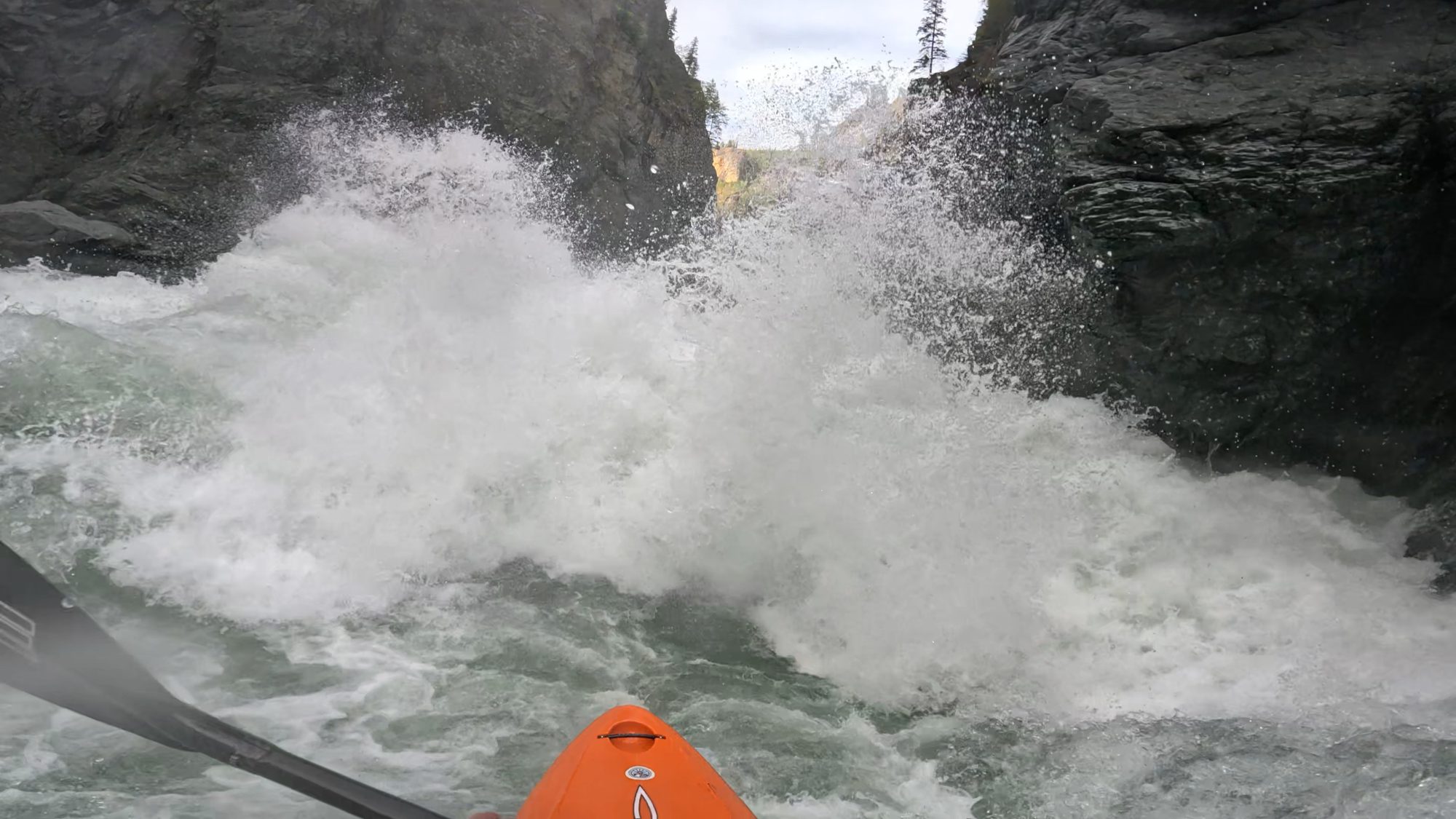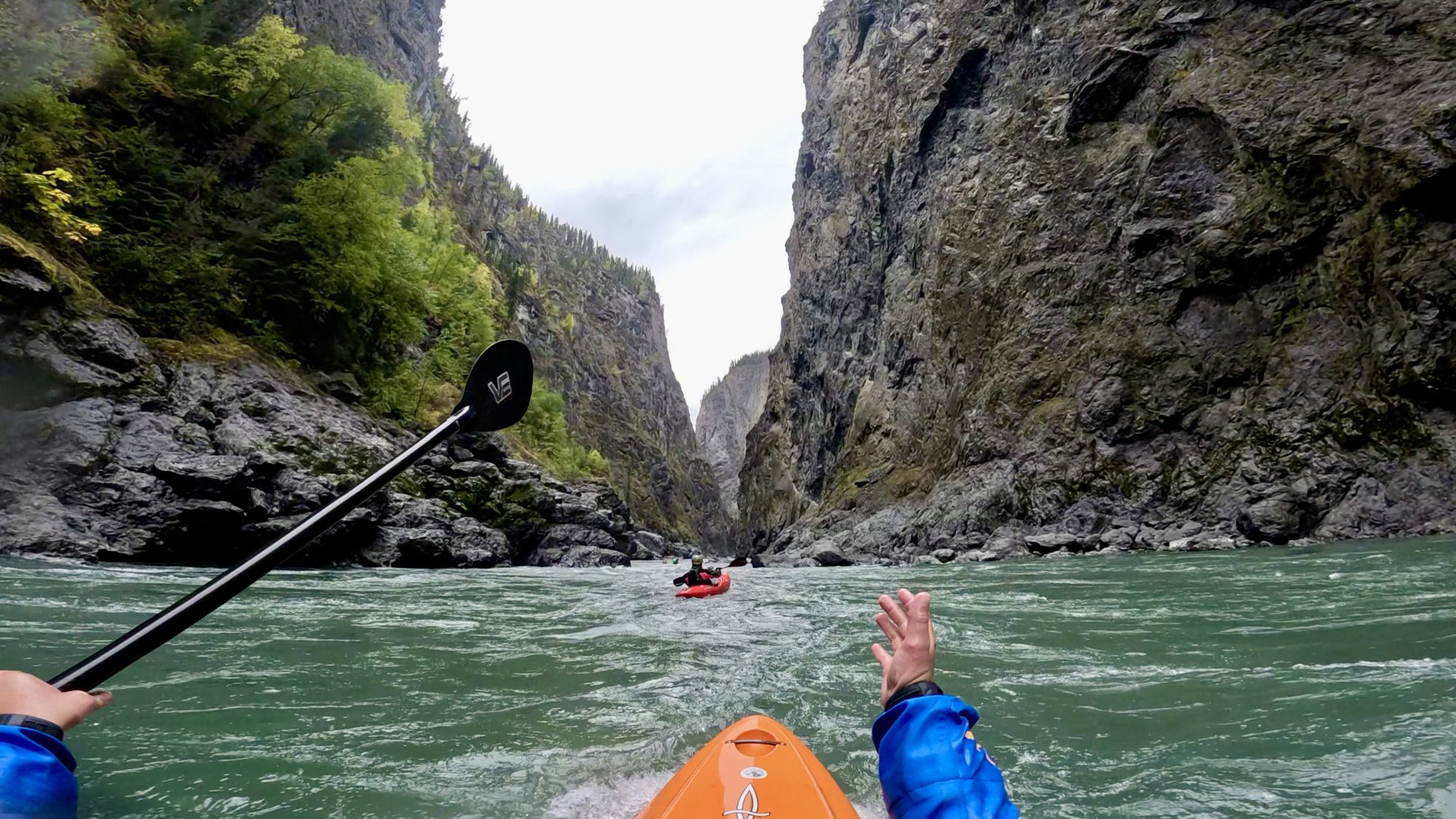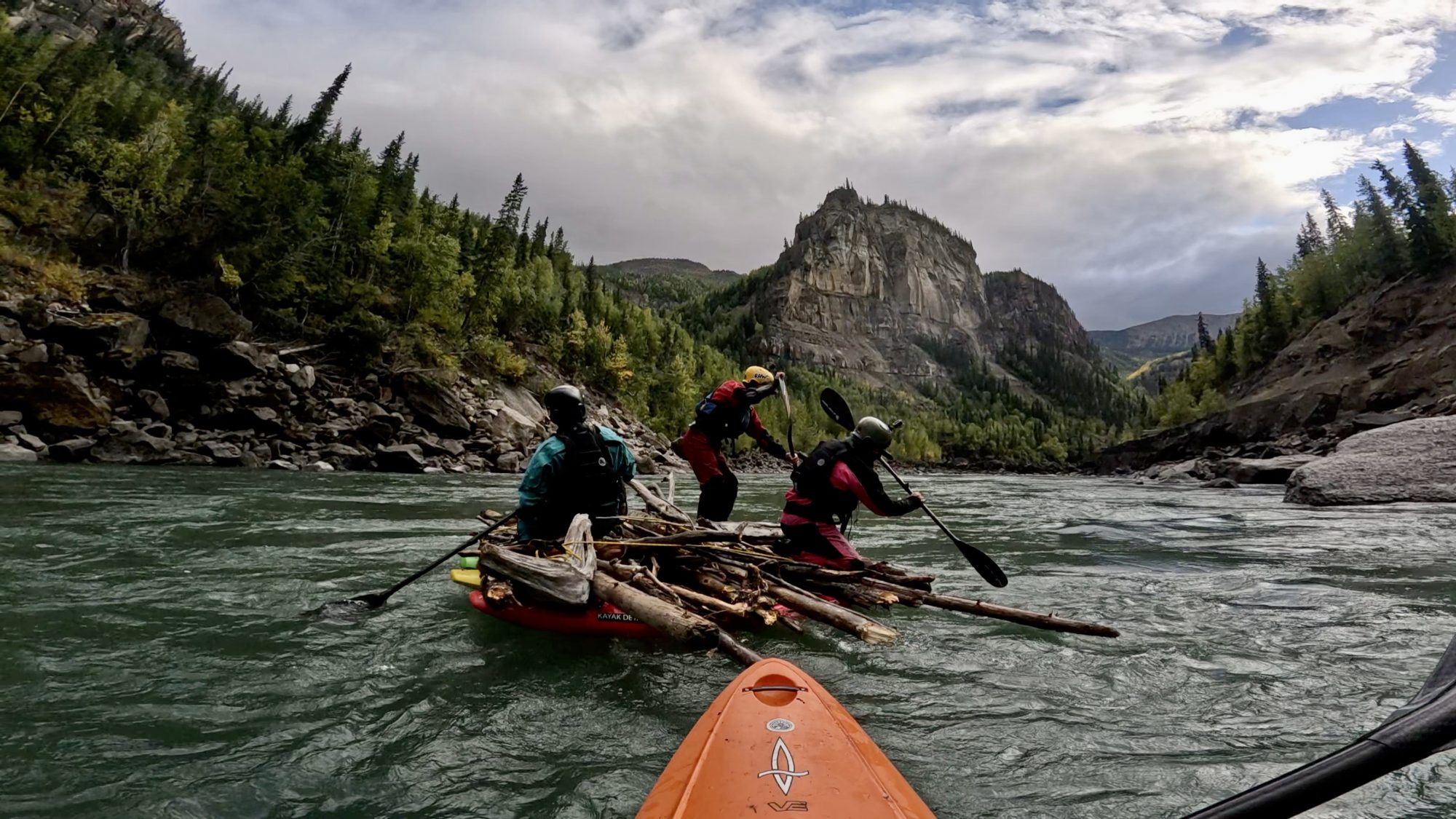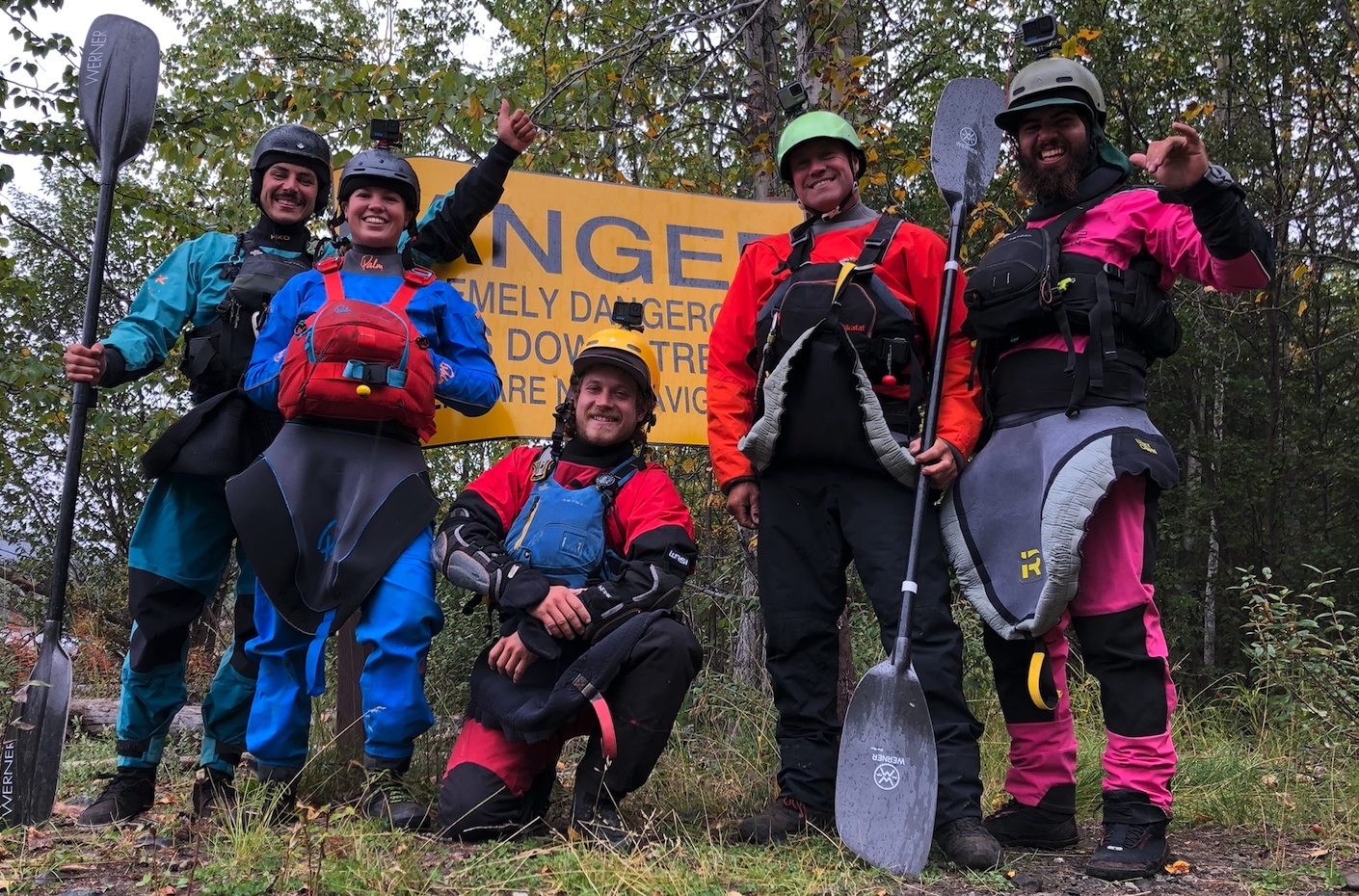The Stikine is a bucket list river for every class 5 kayaker. Its reputation precedes itself. Once you paddle past the first rapid, you’re locked into steep canyon walls hundreds of metres high for the next eighty kilometres of huge volume, stout whitewater. This year was finally my year to make it happen, but with the season getting earlier each year due to climate change, once I was finally finished work and September came around, the water levels were lower than optimal. The original Stikine first descent was around the flows we had (230-250 cms), but these days ‘prime flows’ are considered 350-400 cms with the big leagues running it even higher. This didn’t stop us however and we had an amazing, albeit different, time.
The whitewater
The rumours that were going around about the Stikine at low water was that the lines get crashier and the holes become huge, pourover ledge style holes. You really don’t want to go in those. These stories got me really nervous for the next two days ahead but once we were in and focused on the task ahead, I felt great. What we found was that some of the rumours were true, but not nearly as terrifying as the stories we heard. There were definitely some extra holes in there that would be flushed out at high water, but for the most part the rapids were super satisfying and very manageable if you have the skills. I found the Dagger Code to be the perfect boat. It was super predictable, got over laterals with ease and became an absolute unit once fully loaded. My favourite rapids were Pass or Fail, Wall 1 + 2, Garden of the Gods, The hole that ate Chicago and V Drive.

Those canyon walls were truly stunning. It was a crazy experience to paddle the Stikine with blue water. We had Felix and Corey with us who have over twenty laps under their belts between them. So we had perfect beta and lines to follow. This meant that we didn’t leave camp until mid-day each day, only scouted three times (Wicked Wonder, Wall Two and V Drive) and portaged twice (Site Z and the Guard Dog) the whole way down. There are some must run rapids in there, and lots of them are very hard/impossible to scout. So if you can get yourself a friend who has been in there before, it will save you a whole bunch of time and effort. I can’t even begin to imagine how hard the first descent must have been! I’m very grateful for those who opened this section up for the rest of us.

The lifestyling
It was still relatively warm up there (around 15°C, dropping to 2°C overnight), so the campsite vibes were unreal. In big water, a heavier boat can actually be beneficial and no weight was saved at the expense of a good dinner! We paddled in steak, salmon, sausages, made cinnamon rolls and muffins from scratch. Wolf Tracks was the best campsite I have ever slept at. It has a huge overhanging rock that protects you from all weather and a great spot to have a giant fire. Going at the end of a very busy Stikine season, we heard that the crew before us successfully set all of the campsite wood on fire as one last hoorah, so we stopped one rapid early to made a huge raft of woof to bring to camp so we could do exactly the same.

Overall thoughts
If you’re looking at doing your first lap and levels don’t work in your favour, or you’re unsure if low water is a good option for you, I would say absolutely still go. You still need to be a solid class 5 kayaker, but I would say it is a bit easier than higher water Stikine. You still get the full Stikine experience, it’s still mind blowing in there. What you might find is that you had such a good time that you’ll get out already planning your next trip to go back in there at higher flows. Find yourself a great crew and you certainly won’t be disappointed, no matter what level you paddle it at.
